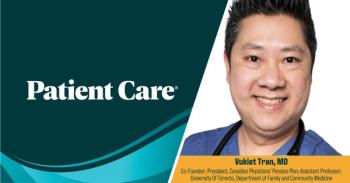
Guidelines Restrict Formula Choices for Infants with Cow's Milk Allergy
BRUSSELS, Belgium -- New guidelines offer a more conservative -- and pricey -- take on formula choices for infants who have an allergy to cow's milk.
BRUSSELS, Belgium, Sept. 21 -- New guidelines offer a more conservative -- and pricey -- take on formula choices for infants who have an allergy to cow's milk.
Allergic infants should be given only extensively hydrolyzed formula or an amino-acid based formula rather than a soy-based product as a first line substitute for cow's milk, said Yvan Vandenplas, M.D., Ph.D., of Vrije Universiteit Brussel here, and colleagues in the October issue of the Archives of Disease in Childhood.
Their industry-supported "Act Against Allergy Taskforce" guidelines were based on existing national recommendations in Germany, the Netherlands, and Finland, as well as on the researchers' personal experience.
The new guidelines are reasonable but more conservative than American Academy of Pediatrics recommendations, commented Paul V. Williams, M.D., of the Northwest Allergy and Asthma Center in Seattle, who has been involved in developing the new AAP guidelines on the infant feeding, due out soon.
"Economics are always an issue," he said, "and extensively hydrolyzed formulas and amino-acid formulas are extremely expensive."
Both sets of guidelines recommend breastfeeding as the ideal option for these infants, but the Taskforce recommended only documented hypoallergenic formulas for infants who need formula.
Physicians should consider an amino acid-based formulation if symptoms continue for two to four weeks with an extensively hydrolyzed formula or if the child refuses to drink the hydrolyzed milk, Dr. Vandenplas and colleagues said.
Severe allergy should be managed only with an amino acid-based formula and referred to a specialist, they wrote.
The 2000 AAP guidelines on hypoallergenic formula took a more cautious stance, limiting use to infants with well-defined clinical indications, citing low allergy prevalence (2% to 3%) and high cost ("as much as three times more than standard formulas").
Partially hydrolyzed formulas are often not tolerated because they contain 1,000 to 100,000 times higher concentrations of intact cow's milk protein than extensively hydrolyzed formulas.
Dr. Vandenplas' group also recommended against formulas based on milk from other mammals, such as sheep, buffalo, horse, camel, or goat, because of the high risk of cross-reactivity.
Soy is the most cost-effective alternative to cow's milk, but also causes allergic reactions in 10% to 35% of infants, regardless of specific immunoglobulin E (IgE) antibodies for cow's milk protein, they said.
So the Taskforce recommended that pediatricians consider soy only for infants refusing to drink an extensively hydrolyzed or amino acid-based formula.
"Although soy formulations are significantly cheaper and have a better acceptance?the risk that the child will develop soy allergy in addition to cow's milk protein allergy, particularly in infants below six months of age, was considered by the authors to be too high for it to be recommended as the first choice," they wrote.
Other unmodified grain-, legume-, and nut-based milk substitutes, including rice, oat, and almond, were not recommended by the Taskforce because these provide too little nutrition.
Other recommendations in the guidelines include:
- Infants with failure to thrive because of allergic symptoms should be given amino acid based-formula for rapid weight gain.
- Pediatricians should take a comprehensive history with careful physical examination to exclude other causes of the infant's distress, identify concurrent conditions, and determine allergy severity.
- Diagnostic tests may include skin prick, specific IgE blood tests (CAP-RAST), and the atopy patch test, which is not approved for use in the U.S., but the gold standard is elimination diets and challenges.
- Cows' milk challenge under medical observation should be done to establish if the allergy persists through childhood.
Dr. Williams hinted that the revision of the AAP's infant feeding guidelines will be substantial and will deal with management as well as prevention of cow's milk and peanut allergies.
"It may change [doctor's] approach to children with food allergies both those who don't yet have allergies but are at risk of developing them and in children with existing food allergies," he said.
The researchers reported research support from SHS/Nutricia and presenting lectures at SHS/Nutricia-sponsored meetings. Individual researchers reported potential conflicts of interest for Mead Johnson, Nestle, Janssen Pharmaceuticals, Astra, Wyeth, and Biocodex.
Dr. Williams reported no conflicts of interest.
Newsletter
Enhance your clinical practice with the Patient Care newsletter, offering the latest evidence-based guidelines, diagnostic insights, and treatment strategies for primary care physicians.



























































































































































































































































































































